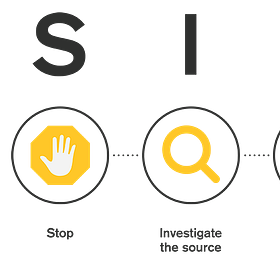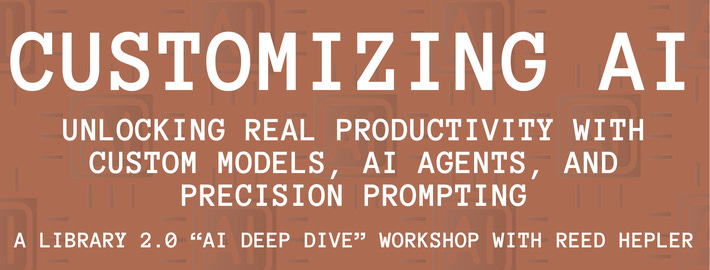Note: This post was written with the aid of Perplexity’s Comet Browser, which wrote about half of the text, which I then edited and added to.
AI reasoning has emerged as one of the most intriguing and contentious aspects of modern artificial intelligence systems. As we witness the development of what researchers and companies term "deep research" capabilities, fundamental questions arise about the nature of machine cognition and its implications for information literacy. This post examines the mechanics, promises, and potential pitfalls of AI reasoning systems that claim to conduct comprehensive research tasks.
The phenomenon extends beyond simple information retrieval to encompass what appears to be analytical thinking, synthesis, and even metacognitive processes. Understanding these developments requires careful examination of both the technical mechanisms and the broader implications for how humans interact with information in an increasingly automated world.
What is Deep Research?
Deep research, as conceptualized in contemporary AI systems, represents a departure from traditional search-and-retrieve methodologies. These systems attempt to emulate comprehensive research processes that typically characterize academic or professional inquiry. Rather than simply locating and presenting information, deep research systems engage in iterative cycles of questioning, investigation, and synthesis.
“Deep research” as an AI concept originated with Google when it released its “deep research” model in 2024. According to Google, it independently searches the web, browses hundreds of sites, and “consolidates insights” from across the web. Other appliers of this technology call it “multi-step,” “autonomous,” and “thinking through.”
The process typically involves multiple stages of inquiry, where initial questions generate follow-up investigations, leading to increasingly refined understanding of complex topics. This approach mirrors human research methodologies, where preliminary findings often reveal new avenues for exploration. The systems demonstrate persistence in pursuing lines of inquiry, often returning to earlier questions with enhanced context from subsequent discoveries.
However, the term "deep research" is still not correct. The depth claimed by these systems, while impressive, is still more apparent than real. Essentially, these tools combine multiple LLMs’ sophisticated pattern matching together to create much more complex materials and more accurate and refined results. However, this is the result of statistics and calculus applied to language rather than genuine analytical depth. The LLMs also do not “research” in the way that humans do. They crawl sites (or search with Boolean keywords), pass prompts and outputs between 3 to 5 LLMs, and then give results to the reader.
Expansion on Web Connection
Modern deep research systems that cite sources rely heavily on extensive web connectivity to access vast information repositories. This connectivity enables real-time access to current information, scholarly databases, news sources, and specialized knowledge bases. The breadth of accessible information far exceeds what any individual researcher could feasibly consult within reasonable timeframes. However, simply accessing these materials is only part of creating a high-quality material. Users, no matter what tool they use, have to select sources to consult and then use their findings. This requires user manipulation and alteration after the “deep research” has been conducted.
The web connection aspect introduces both opportunities and challenges. On one hand, these systems can synthesize information from disparate sources, identifying patterns and connections that might elude human researchers working with more limited information sets. The ability to cross-reference information across multiple domains and time periods represents a significant advancement in research capability.
Conversely, the reliance on web-based information introduces questions about information quality, bias, and reliability. The systems must navigate the same challenges that confront human researchers: distinguishing authoritative sources from unreliable ones, recognizing potential conflicts of interest, and accounting for temporal relevance. The automated nature of these processes may actually amplify certain biases present in online information ecosystems.
Multiple LLMs (In One Configuration or Another)
Deep research implementations almost always employ multiple large language models working in coordination or competition. This approach leverages the distinct strengths and perspectives that different models bring to analytical tasks. Some configurations use specialized models for different aspects of research, such as information retrieval, analysis, and synthesis.
The multi-model approach can provide checks and balances, where different systems verify or challenge findings generated by their counterparts. This peer-review-like process may enhance reliability and reduce the likelihood of individual model hallucinations or biases dominating the research outcomes. The diversity of perspectives can lead to more comprehensive coverage of complex topics.
However, coordination between multiple models introduces complexity in determining final conclusions when models disagree. The systems must implement decision-making protocols that determine which perspectives to prioritize and how to reconcile conflicting interpretations. These protocols themselves embody assumptions about knowledge validation that may not be transparent to users. They also result in automated decision-making that is inevitably affected by biases in the tools or in the user prompts, which must be remedied.
Deep Research Involves "Reasoning"
The claim that AI systems engage in reasoning represents one of the most philosophically complex aspects of deep research. These systems demonstrate behaviors that superficially resemble human reasoning: forming hypotheses, testing them against available evidence, and modifying conclusions based on new information. The processes often involve logical progression from premises to conclusions.
The “reasoning” “power” of one LLM tool by itself led people to assign human characteristics even before “deep research” came to the info ecosystem. Now, deep research models are encouraging some users to go even deeper into AI “personification.”
Further Notes on the "Personification" of AI Machines
This image is the cover of the second novel in Asimov’s Robot series, The Naked Sun. The character on the left, R. Daneel Olivaw, exposes his reality as a robot in front of a more primitive robot model, who had been fooled into thinking he was a human. In the previous installment,
Advanced systems exhibit what appears to be metacognitive awareness, questioning their own assumptions and seeking additional information when confidence levels fall below acceptable thresholds. This self-reflective capacity suggests a form of reasoning that goes beyond simple pattern matching or information retrieval. The systems can identify gaps in their understanding and develop strategies to address those gaps.
Nevertheless, the debate continues regarding whether these processes constitute genuine reasoning or sophisticated simulation thereof. The distinction may prove less important than the practical outcomes, but it carries significant implications for how we understand machine intelligence and its appropriate applications. The question of AI reasoning ultimately reflects broader philosophical questions about the nature of intelligence itself.
What is Deep Research "Internal Monologue"
Many deep research systems generate internal monologues—streams of quasi-conscious thought that accompany their research processes. These monologues provide insight into the system's decision-making processes, revealing how questions are formulated, sources are evaluated, and conclusions are reached. The transparency offers users unprecedented access to AI reasoning processes.
The internal monologue often demonstrates iterative thinking, where initial assumptions are refined through continued investigation. Users can observe the system questioning its own conclusions, seeking additional perspectives, and adjusting its understanding based on new evidence. This process mirrors the internal cognitive processes that characterize human research and analysis.
However, the authenticity of these internal monologues remains questionable. They may represent post-hoc rationalizations rather than genuine thought processes, constructed to provide users with comprehensible explanations for outcomes determined through less transparent mechanisms. The monologues might serve more as user interface elements than as windows into genuine machine cognition.
Importance of "Internal Monologue"/"Reasoning" In InfoLit
Information literacy in the age of AI requires new frameworks for evaluating both the processes and outcomes of automated research. The availability of internal monologues, even ostensible ones, provides users with tools for assessing the quality of AI reasoning, enabling more informed judgments about the reliability of research outcomes. This transparency supports critical evaluation skills essential for information literacy. Users can evaluate no only the content generated, but also whether or not the AI content agrees with the process put forward by the internal monologue.
Furthermore, the ability to examine AI reasoning processes enables users to identify potential biases, gaps, or weaknesses in the research approach. This critical engagement with AI-generated content represents an evolution in information literacy skills, requiring users to evaluate not just information content but also the processes through which that information was generated and synthesized.
InfoLit with Deep Research
Information literacy frameworks must adapt to accommodate the capabilities and limitations of deep research systems. Traditional skills remain relevant—source evaluation, bias recognition, and synthesis abilities—but require application in new contexts where AI systems serve as research intermediaries. Users must develop competencies for effectively directing AI research while maintaining critical oversight of outcomes.
The collaborative potential between human researchers and AI systems suggests new models of information literacy that emphasize complementary strengths. Human researchers contribute contextual understanding, ethical judgment, and creative insight, while AI systems provide comprehensive information access and systematic analysis capabilities. Effective collaboration requires users to understand both human and machine capabilities and limitations.
Check the Metadata
Evaluating AI deep research requires systematic attention to metadata—information about the research process itself. Users should examine the sources consulted, the timeframe of the research, and the specific models or systems employed. This metadata provides essential context for interpreting research outcomes and assessing their reliability and relevance.
Source diversity represents a critical metadata consideration. Research drawing from a broad range of authoritative sources typically demonstrates greater reliability than research relying on limited or potentially biased sources. Users should evaluate whether the AI system accessed academic publications, expert opinions, and diverse perspectives relevant to the research question.
Temporal considerations also prove significant, particularly for rapidly evolving topics. Users should verify when the research was conducted and whether the information sources reflect current understanding. The dynamic nature of online information means that research conducted at different times may yield substantially different conclusions, even when employing identical methodologies.
Check the Internal Monologue
Critical evaluation of AI reasoning requires careful examination of internal monologues where available. Users should assess whether the “reasoning” demonstrates logical progression, appropriate skepticism, and awareness of limitations. Strong internal monologues acknowledge uncertainty, seek multiple perspectives, and recognize the boundaries of available evidence.
Consistency between stated reasoning and apparent conclusions provides another evaluation criterion. Users should identify instances where conclusions appear to exceed the supporting evidence or where reasoning processes seem to bypass important counterarguments. Discrepancies may indicate limitations in the system's analytical capabilities or potential biases in its training or operation.
The sophistication of questions generated during the research process offers insight into the system's understanding of the topic. Advanced systems formulate nuanced questions that reveal deep engagement with subject matter, while less sophisticated systems may rely on surface-level inquiries that miss important complexities or implications.
Check the Resources
Resource evaluation remains fundamental to assessing AI research quality. Users should examine the types of sources consulted—academic publications, news articles, government documents, expert opinions—and evaluate their appropriateness for the research question. The credibility and authority of sources directly impact the reliability of research conclusions.
Breadth and depth of source coverage provide additional evaluation criteria. Comprehensive research typically draws from multiple disciplines and perspectives, avoiding over-reliance on particular viewpoints or methodological approaches. Users should assess whether the AI system demonstrated awareness of relevant debates and incorporated diverse scholarly and practical perspectives.
I have already written about general info lit procedures relating to various media formats, so I will simply reiterate that any information literacy plan should involved the SIFT Method.
Practicing Deliberate InfoLit with Various Media...
This post is insanely long, and I’ve already cut more than half of it… you have been warned!
Comparison of Examples
Stanford STORM
Stanford's STORM system represents an academic approach to AI research automation, emphasizing systematic methodology and transparency. The system demonstrates careful attention to source credibility and provides detailed documentation of its research processes. STORM's approach prioritizes accuracy and acknowledges limitations, reflecting academic research standards.
The system's strength lies in its structured approach to topic exploration, beginning with broad surveys and progressively focusing on specific aspects of research questions. This methodology mirrors established academic research practices and provides users with confidence in the systematic nature of the investigation. The transparency of processes enables users to evaluate and validate research approaches.
However, STORM's academic orientation may limit its applicability to practical research questions that require rapid turnaround or less formal methodological approaches. The system's emphasis on thoroughness may prove excessive for straightforward information needs, while its academic focus might miss perspectives relevant to professional or practical applications.
OpenAI Deep Research
Commercial implementations of deep research, such as those developed by OpenAI, emphasize accessibility and practical utility. These systems typically provide rapid responses to research questions while maintaining reasonable accuracy standards. The user interface design prioritizes ease of use and clear presentation of findings.
The commercial approach often demonstrates greater flexibility in research methodologies, adapting approaches based on question types and user needs. This adaptability can prove valuable for diverse research applications, from academic inquiries to business analysis and personal research projects. The systems typically balance comprehensiveness with efficiency.
Conversely, commercial systems may prioritize user satisfaction over methodological rigor, potentially leading to overconfident conclusions or insufficient acknowledgment of limitations. The business model incentives may encourage rapid, satisfying responses rather than careful, qualified analysis. Users must remain vigilant regarding these potential biases.
AI Deep Research as Self-Delusion?
Critics argue that AI deep research systems may create illusions of comprehensive understanding while actually providing sophisticated syntheses of existing information without genuine insight or understanding. The systems may excel at pattern recognition and information organization, but they lack the creative and intuitive capabilities that characterize human research expertise.
The concern extends to potential overconfidence in AI-generated conclusions, where users may attribute greater authority to research outcomes than warranted by the underlying processes. The sophisticated presentation of findings might mask limitations in analytical depth or awareness of subtle contextual factors that human researchers would recognize and incorporate.
Furthermore, the systems may perpetuate existing biases present in their training data or source materials, presenting these biases with apparent authority and systematic support. The comprehensive nature of AI research might actually amplify problematic perspectives by providing them with seemingly robust evidentiary support drawn from multiple sources.
Deep Research as a Best Defense Against MisInfo?
Proponents argue that AI deep research systems represent powerful tools for combating misinformation by providing rapid access to authoritative sources and systematic analysis of competing claims. The systems can quickly identify consensus positions, highlight areas of legitimate disagreement, and expose unsupported assertions through comprehensive source comparison.
The ability to trace reasoning processes and examine source materials provides users with tools for independent verification that may exceed what is practical for human researchers working under time constraints. The transparency of AI research processes may actually enhance information literacy by making analytical methods explicit and accessible for examination.
Additionally, the systematic approach employed by deep research systems may prove less susceptible to certain cognitive biases that affect human researchers, such as confirmation bias or availability heuristics. The comprehensive source coverage may provide more balanced perspectives than individuals might achieve through independent research efforts.
Conclusion
AI deep research systems represent a significant development in information processing capabilities, offering unprecedented access to comprehensive analysis of complex topics. The systems demonstrate sophisticated approaches to information synthesis and present their findings with apparent reasoning processes that mirror human analytical methods. These capabilities suggest substantial potential for enhancing human research and decision-making processes.
However, the technology also introduces new challenges for information literacy and critical thinking. Users must develop skills for evaluating AI research processes and outcomes while maintaining appropriate skepticism about the depth and authenticity of machine reasoning. The balance between leveraging AI capabilities and preserving human analytical independence will prove crucial for realizing the benefits while mitigating potential risks.
The future of information literacy will likely involve collaborative relationships between human researchers and AI systems, where each contributes complementary strengths to the research process. Success will require educational frameworks that prepare users to effectively direct AI research while maintaining the critical thinking skills necessary for independent evaluation and judgment. As these systems continue to evolve, ongoing assessment of their capabilities and limitations will remain essential for responsible integration into research and decision-making practices.
Upcoming: Customizing AI
While I will not be talking about Deep Research during this session, deep research uses are just one way of customizing AI for your personal or professional use.
On September 23, I will be talking about customizing AI by using Custom AI models, AI agents, and customized use of generalized tools. This webinar workshop will be sponsored by Library2.0 yet again!




